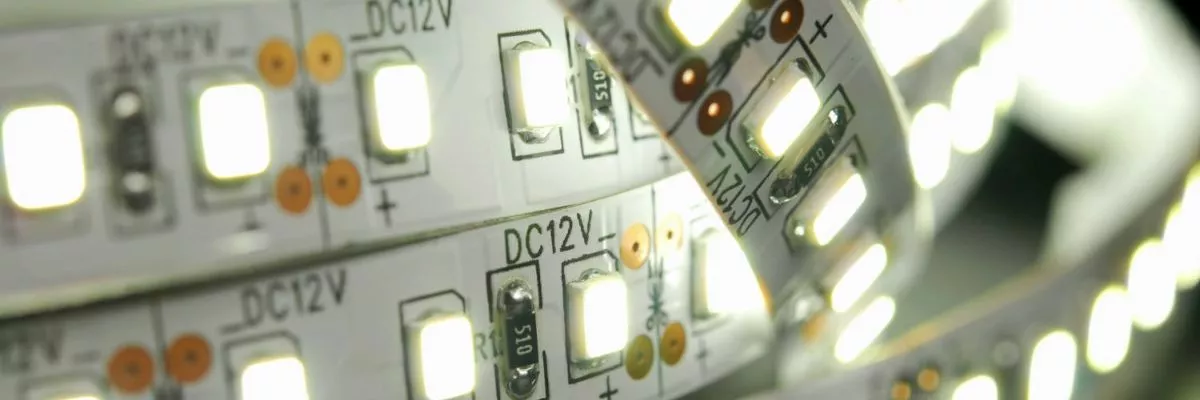- What kind of LED strips can we find?
- How to install single color and RGB/RGBW LED strips step by step
- Step 1 – Choose the type of strip.
- Step 2 – Measure the space where the strip is to be placed and cut the necessary length.
- Step 3 – Clean the surface where the strip will be installed.
- Step 4 (optional) – Connecting the strips to a dimmer
- Step 5 – Connect the power supply to the mains and to the strip.
- Connecting the LED strip to the power supply in detail
- How to determine the transformer required for a 12/24V LED Strip
- How to connect an LED strip to 220V mains
EIn this section of our blog about decoration we have given some ideas of the possibilities offered by LED strips. This is a very versatile, functional and fun lighting that has opened up a world of possibilities in terms of lighting. Below we share a series of tips for installing 12V single color or RGB/RGBW LED strips and how to determine the power supply we need to power them.
The main advantage of LED strips is that we can install them ourselves if we know how to. Another advantage of LED strips is that we can cut them to fit a specific size, or by using the right accessories we can join several strips together, or we can create corners and curves.
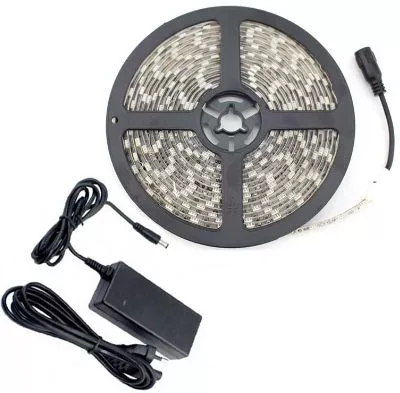
What kind of LED strips can we find?
LED strips are available in multiple voltages, 12V and 220V with the same SMD 5050 LED with the same performance, and with very few differences.
The differences would be as follows:
220V LED strips
- Due to the insulation they are less flexible and have a larger size
- They are easier to install, since the strip is directly connected to the electrical network.
- We can connect up to 50 meters of strip, depending on the type of strip and controller used.
- The rectifier is smaller in size
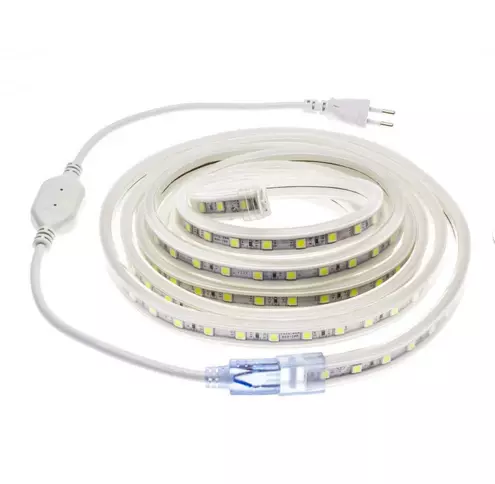
LED Strips DC 12V/24v
- They are small in size.
- Easy to install as they usually have an adhesive back.
- Varias potencias disponibles según el número de LEDs
How to install single color and RGB/RGBW LED strips step by step
When we need to cut the LED strip, we have to make sure that we do it in the places indicated, according to the LED strip model.

Connecting the LED strip to the power supply in detail
To get it working, we have to connect the end of the LED strip to the connector and the connector to the power supply. To do this we will connect the RED and BLACK wires of the strip to the output of the power supply as follows:
SIGN + or +V with RED wire
SIGN – or -V with BLACK cable
In this case, as we have used 12V LED strips in this example, we connect the power supply to the 220VAC mains (Phase, Neutral and Earth). You can also consult what other power supplies we have available.
If the strip is RGB or single color dimmable we will place a CONTROLLER/DIMMER between the strip and the power supply to be able to adjust the color/intensity. Next we can see an example of installation of the Dimmer.
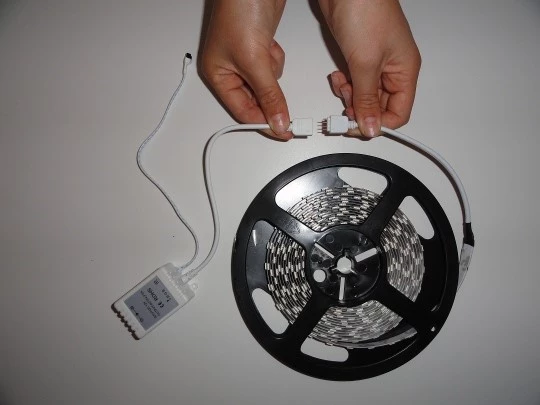
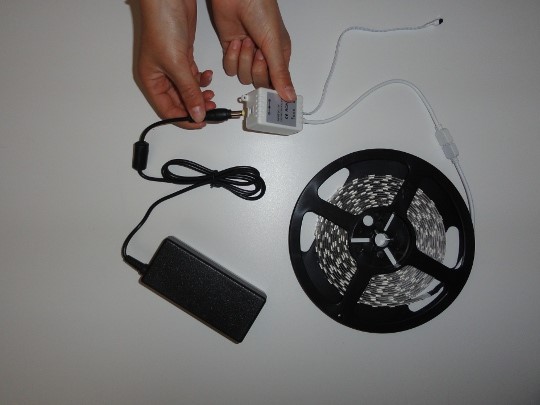
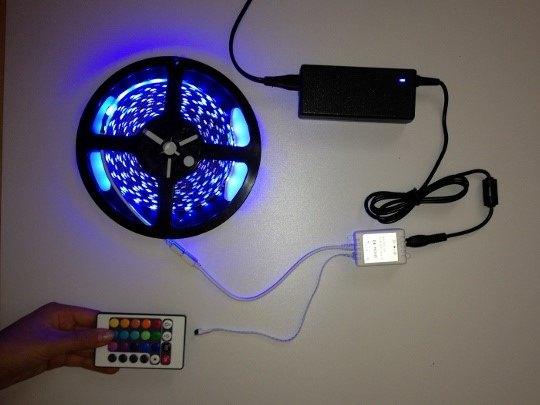
Remember that in Ledkia we also have LED strip kits with all the components ready for installation.
How to determine the transformer required for a 12/24V LED Strip
The power supply required to power the strip depends on the total wattage (W) of the strip, which is determined by the length of the strip and the LEDs per metre. In addition, we have to consider the efficiency of the power supply that we will use to power the strip.
Although it is always necessary to check the consumption of the strip to be purchased, as it may vary from one product to another, the typical power consumption is as shown in the table below:
| Number of LED/m | W/m of the strip |
|---|---|
| 30 LED/m | 7.25 W/m |
| 60 LED/m | 10 W/m |
| 120 LED/m | 14 W/m |
The following equation will be used for the calculation:
Pfte = L x Wm / Feff
Pfte is the power of the source we need, L the length of the strip, Wm the watts per meter consumed by the strip and Feff the efficiency of the power supply.
Therefore, if we have 8 meters of 30 LED/m strip and a source with an efficiency of 85% (another data to check in the purchased product) we will need: Pfte = 8 x 7.25 / 0.85 = 68.23 W. Then we should install the source with an immediately higher rated power, in this case 75W.
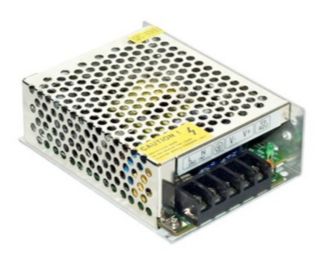
How to connect an LED strip to 220V mains
Finally, we will briefly explain how to install a strip operating on 220V AC. As we have already mentioned, this type of strip does not require a power supply. The main difference to be considered, as opposed to the 12V strips installation, goes as follows:
- Check that the rectifier cable that will be used to plug the strip into the mains, is capable of supporting the total length of strip that will be installed.
- Choose the type of rectifier/controller suitable for the type of strip (single color/RGB).
- Use a suitable mounting system (double-sided tape, brackets, etc.).
Of course, we must follow all the steps for measuring the strips and for cleaning the installation surface. And most importantly, we must always cut the strips in the areas indicated for this purpose.
As we have seen, it is very easy to install LED strips following this little guide, so there are no more excuses to try out the decorative possibilities offered by this type of LED lighting!

